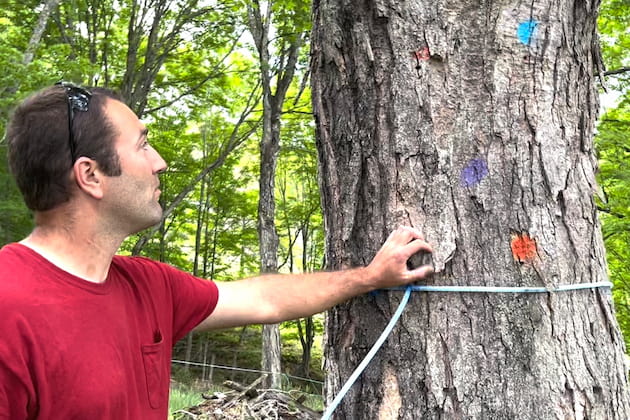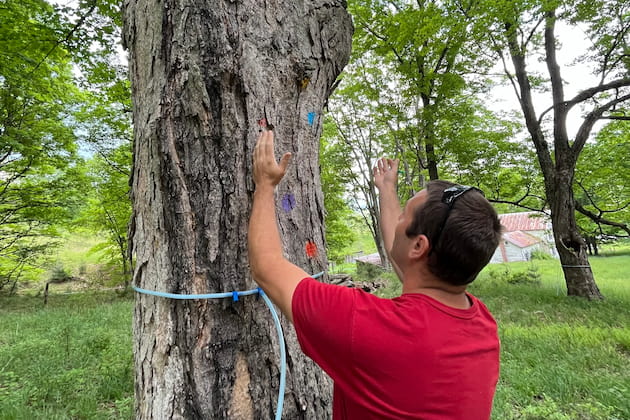Tapping & Tubing
Sugarmaker endorses “pattern tapping”
Use forester's paint to mark tapholes from year to year
By PETER GREGG | DECEMBER 22, 2022
DUNMORE, W.V.—Adam Taylor of Frostmore Farm in Dunmore, W.V. practices sequential or “pattern” tapping by marking the tapholes from year to year with colored paint.
“We tend to move in the same direction every year, always to the right, so we dont get partitioned wood,” he said.
Taylor says he also likes to tap “really high in the air” to avoid tapholes from long ago where buckets were once hung from this tree.
“We get good sap quality every year,” Taylor said.
He uses foresters’ paint to mark the taphole, which does not affect the tree.Brand name Nelson’s Tree Paint.
Tapping is easier because the previous year’s taphole is easy to spot.
“All I have to do is look up, I see it, boom, and then I’m going to the next one,” he said.
“You gotta make sure you’re hitting good wood. No good wood, no sap.”
The method is also endorsed by Cornell Univeristy maple researchers, who offer the following guidelines:
• Always tap into new, healthy sapwood
• At least 1" left or right of old tap holes
• At least 12" up and down on the trunk
• Helps avoid hitting non-conductive wood

































